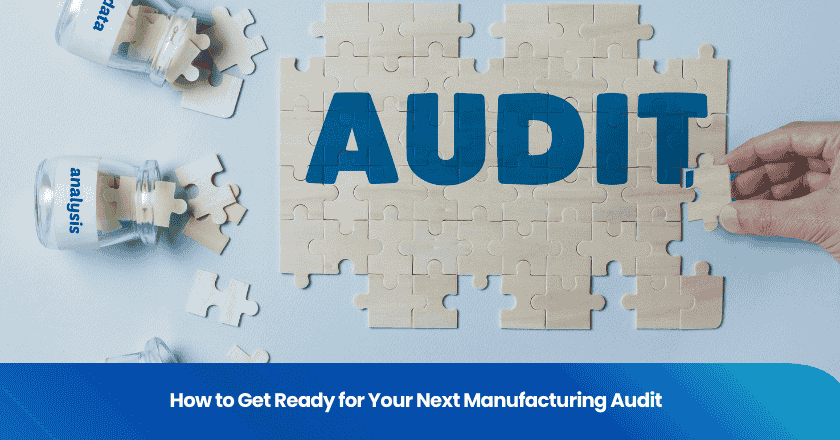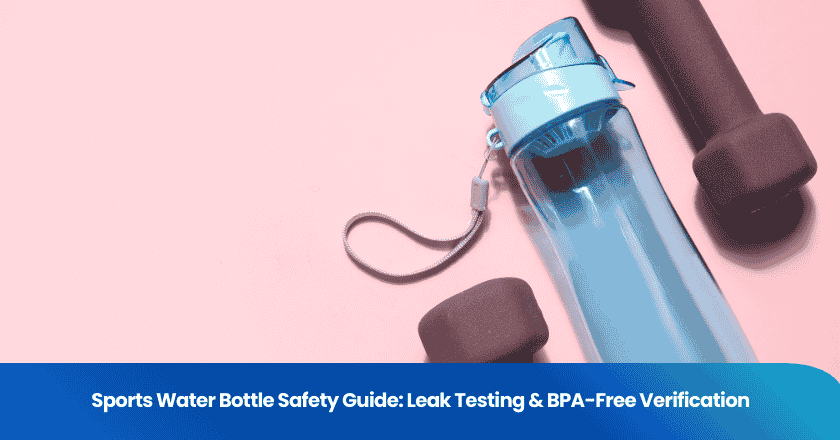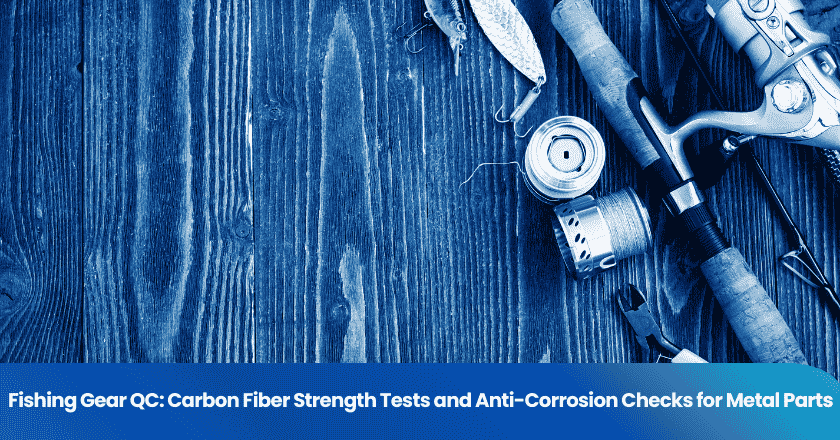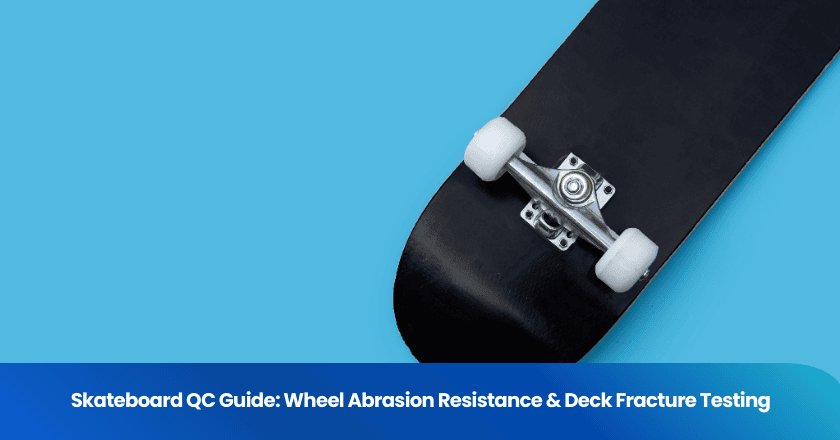
You succeed in a manufacturing audit when you focus on thorough preparation. You review gmp requirements, organize documentation, and address gaps in your processes. You study every gmp standard that applies to your facility. You check that your team understands gmp principles and follows them daily. You use gmp controls to maintain consistency. You identify gaps early and fix them before the manufacturing audit. Proactive planning helps you stay ahead and ensures lasting compliance.
Audit Scope
Audit Type
You start by identifying the type of audit your facility will undergo. A manufacturing audit focuses on your production processes and checks if you meet industry standards. An initial certification audit reviews your systems for the first time and determines if you qualify for certification. A management certification audit evaluates your ongoing compliance with your quality management system. You confirm the audit type with your auditor and review the audit plan. This step helps you set clear expectations and prepare the right documents.
Objectives
You clarify the objectives of the audit before you begin your preparations. Auditors may want to verify your compliance with the quality management system or assess your ability to meet customer requirements. You list the main goals, such as checking process consistency, reviewing documentation, or evaluating corrective actions. You share these objectives with your team so everyone understands what the audit will cover. This approach keeps your preparations focused and efficient.
Standards
You review all standards and regulations that apply to your facility. You check the iso 9001 requirements if your audit involves certification. You study industry-specific guidelines and local regulations. You compare your current practices with these standards and note any gaps. You use a checklist to track compliance with each requirement. This step ensures you address every detail and maintain readiness for your manufacturing audit.
Tip: Create a table that matches each audit objective with the relevant standard. This method helps you organize your preparations and avoid missing key requirements.
Self-Assessment
Gap Analysis
You begin your self-assessment by conducting a thorough gap analysis. This process helps you compare your current gmp practices with the requirements set by industry standards. You identify areas where your facility meets gmp expectations and highlight sections that need improvement. A gap analysis gives you a clear roadmap for your audit preparation.
You use a self-audit checklist to review each step of your manufacturing process. You examine documentation, equipment maintenance, and employee training. You look for missing records or outdated procedures. You also check if your gmp controls work as intended. When you find a gap, you document it and assign responsibility for corrective action.
Tip: Schedule regular self-audit sessions throughout the year. This habit keeps your team familiar with gmp requirements and reduces last-minute surprises before an audit.
Risk Areas
You focus on identifying risk areas during your self-assessment. You analyze which parts of your operation face the highest risk of non-compliance with gmp. You pay close attention to inventory management, sanitation, and process controls. You also review previous audit findings to spot recurring issues.
You use your self-audit results to prioritize improvements. You address high-risk areas first to minimize the chance of gmp violations. You involve your team in brainstorming solutions and updating procedures. You keep detailed records of your actions to show auditors your commitment to continuous improvement.
Common risk areas in gmp audits:
- Incomplete documentation
- Inconsistent training records
- Poor equipment maintenance
- Lapses in sanitation protocols
You make self-assessment a regular part of your quality management system. This approach strengthens your gmp compliance and builds confidence for your next manufacturing audit.
Documentation
Inventory Records
You start your documentation review by gathering all inventory records. You check that your inventory tracking system matches your actual stock. You verify that your inventory methodology, such as FIFO, LIFO, or weighted average, aligns with gmp requirements. You make sure your records show every movement of raw materials and finished goods. You keep detailed logs for each batch. You confirm that your team updates records in real time to support gmp compliance.
Tip: Use a table to match each inventory item with its storage location, quantity, and batch number. This approach helps you spot gaps and maintain gmp standards.
Financial Statements
You collect your financial statements and review them for accuracy. You check that your statements reflect all transactions related to manufacturing. You ensure that your cost accounting methods support gmp compliance. You look for any inconsistencies between your financial data and your inventory records. You keep your statements organized and up to date. You prepare to show auditors how your financial controls support gmp principles.
Key financial documents to prepare:
- Balance sheets
- Income statements
- Cost of goods sold reports
- Audit trails for transactions
Compliance Files
You organize all compliance files before the audit. You gather gmp certificates, inspection reports, and regulatory correspondence. You check that your compliance records cover every aspect of your operation. You review contracts, supplier qualifications, and training logs. You make sure your files show a clear history of gmp compliance. You update any missing or outdated documents. You keep your compliance files accessible for quick reference during the audit.
Note: Consistent documentation supports your gmp compliance and builds trust with auditors.
You review all documentation for accuracy and consistency. You correct errors and fill in missing information. You make documentation review a regular part of your gmp program. This habit keeps your facility ready for any manufacturing audit.
SOPs & Processes
SOP Updates
You keep your standard operating procedures (SOPs) current to support gmp compliance. You review each SOP on a regular schedule. You update procedures when you change equipment, materials, or processes. You make sure every SOP reflects the latest gmp requirements. You involve your team in the review process. You ask for feedback from operators and supervisors who use these procedures daily. You document every change and keep a revision history for each SOP.
Tip: Assign responsibility for SOP updates to a specific team member. This approach ensures accountability and keeps your gmp documentation organized.
You train your staff on new or revised SOPs as soon as you release them. You use training logs to track completion. You confirm that everyone understands the changes and can apply them in their daily work. You keep these records ready for your next gmp audit.
Process Consistency
You focus on process consistency to meet gmp standards. You use SOPs as the foundation for every task in your facility. You monitor each step to ensure your team follows procedures exactly. You use quality control checks at key points in your process. You document results and investigate any deviations from the expected outcome.
You create a table to track process steps, responsible staff, and quality control checkpoints:
| Process Step | Responsible Staff | Quality Control Checkpoint |
|---|---|---|
| Material Receipt | Warehouse Lead | Inspection Log |
| Mixing | Operator | Batch Record Review |
| Packaging | Supervisor | Final Product Check |
You review these records during your gmp self-assessments. You look for trends or repeated issues. You use this information to improve your processes and strengthen your quality control system. You make process consistency a core part of your gmp program.
Note: Consistent processes and up-to-date SOPs help you maintain gmp compliance and pass your next audit with confidence.
Team Training
Roles
You assign clear roles to every team member involved in your gmp program. Each person needs to understand their specific responsibilities before the audit. You start by mapping out your team structure. You identify who manages documentation, who oversees production, and who handles quality control. You make sure each role supports your gmp compliance goals.
You use a table to clarify responsibilities:
| Role | Responsibility |
|---|---|
| Quality Manager | Oversees gmp compliance |
| Production Lead | Ensures process consistency |
| Documentation Clerk | Maintains gmp records |
| Training Coordinator | Schedules gmp training |
You hold meetings to review these roles. You encourage questions and feedback. You want everyone to feel confident about their part in the gmp process. You remind your team that strong role clarity reduces mistakes and supports a smooth audit.
Tip: Post the team roles chart in a common area. This keeps everyone aware of their gmp responsibilities.
Refresher Sessions
You schedule regular refresher sessions to keep your team updated on gmp requirements. You use these sessions to review changes in procedures, highlight common audit findings, and reinforce best practices. You focus on practical examples from your own facility.
You keep sessions interactive. You ask team members to share their experiences with gmp challenges. You use quizzes or short exercises to test understanding. You track attendance and participation to ensure everyone stays engaged.
Benefits of regular refresher sessions:
- Reinforce gmp knowledge
- Address gaps in understanding
- Prepare for unexpected audit questions
You document each session. You keep records of topics covered and feedback received. You use this information to improve future training and maintain a strong gmp culture.
Audit Findings
Past Reports
You start your audit findings review by collecting all past audit reports. These documents give you a clear picture of your facility’s performance over time. You look for patterns in previous findings. You note which areas auditors flagged most often. You also check if the same issues appeared in more than one report.
You organize your past reports in a way that makes them easy to access. You create a summary table to highlight key findings from each audit:
| Audit Date | Major Findings | Status |
|---|---|---|
| 2022-03-15 | Incomplete training logs | Resolved |
| 2022-09-10 | Inventory discrepancies | In Progress |
| 2023-04-05 | SOP outdated | Resolved |
You use this table to track your progress. You share these findings with your team. You discuss what worked and what still needs improvement. This approach helps you avoid repeating mistakes and shows auditors that you take their feedback seriously.
Tip: Keep digital copies of all past reports. This practice saves time during your next audit and supports a transparent review process.
Corrective Actions
You address each audit finding with a clear corrective action plan. You assign responsibility for every action. You set deadlines and monitor progress. You document every step you take to fix the issue.
You use a checklist to make sure you complete all corrective actions:
- Identify the root cause of the finding
- Develop a corrective action plan
- Assign tasks to responsible team members
- Set a timeline for completion
- Verify the effectiveness of the solution
- Record the results
You review your corrective actions before the next audit. You confirm that you closed all open items. You prepare evidence to show auditors your commitment to continuous improvement.
Note: Consistent follow-up on corrective actions builds trust with auditors and strengthens your compliance program.
Mock Audit
Simulation
You strengthen your audit readiness by running a mock audit. This exercise lets you experience the audit process before the real event. You assign team members to act as auditors. You walk through your facility, review documents, and ask questions just like an external auditor would. You use this simulation to test your team’s knowledge and your documentation’s accuracy.
You set clear goals for your mock audit. You might focus on high-risk areas or recent changes in your processes. You encourage your team to treat the simulation seriously. You want everyone to answer questions confidently and follow procedures exactly. You take notes on any issues or delays you notice during the walkthrough.
Tip: Treat the mock audit as a real event. This mindset helps your team stay alert and spot weaknesses you might miss in daily routines.
You review the results with your team. You discuss what went well and where you need improvement. You use feedback from the simulation to update your training, fix documentation gaps, and improve your processes.
Checklist
You use a detailed checklist to guide your mock audit. This tool keeps your review organized and ensures you cover every requirement. You list each area you need to inspect, such as inventory records, SOPs, and training logs. You check off each item as you go.
A sample mock audit checklist might look like this:
| Area | Item to Review | Status | Notes |
|---|---|---|---|
| Inventory | Batch records | Complete | |
| SOPs | Revision history | Needs Update | Update by next week |
| Training | Attendance logs | Complete | |
| Compliance Files | Certificates | Incomplete | Missing 2023 report |
You update your checklist after each mock audit. You add new items based on recent findings or changes in regulations. You keep your checklist accessible so your team can use it for ongoing self-assessments.
Note: A well-maintained checklist helps you stay organized and ready for any manufacturing audit.
Audit Day Prep
Logistics
You set the stage for a successful manufacturing audit by planning logistics in advance. You confirm the audit date and time with your auditor. You prepare a clean and organized workspace. You check that all necessary documents are available and easy to access. You assign a dedicated room for the audit team. You make sure the room has enough seating, good lighting, and access to power outlets.
You review your facility layout. You map out the areas the auditor will visit. You clear walkways and remove unnecessary items from production zones. You post signs to guide the auditor to key locations. You check that safety equipment is in place and that emergency exits are clearly marked.
You prepare a schedule for the audit day. You list the order of activities, such as document review, facility tour, and interviews. You share this schedule with your team. You assign staff to greet the auditor and answer questions. You keep backup copies of critical documents in case of technical issues.
Tip: Prepare a checklist for audit day logistics. This helps you avoid last-minute problems and keeps the process smooth.
Communication
You establish clear communication protocols for audit day. You brief your team on how to interact with the auditor. You remind everyone to answer questions honestly and directly. You encourage staff to stay calm and professional during the audit.
You designate a point of contact for the auditor. This person coordinates the audit process and handles requests for information. You make sure the point of contact knows where to find documents and who to call for technical questions.
You hold a short meeting before the audit begins. You review the audit schedule and remind your team of their roles. You encourage staff to speak up if they notice any issues during the audit. You keep communication open throughout the day.
You document all auditor requests and responses. You record any feedback or observations. You use this information to improve future audit preparations.
Note: Strong communication helps you build trust with auditors and ensures a successful manufacturing audit.
Post-Audit
Review
You begin your post-audit process by reviewing every aspect of the audit. You gather your team and examine the auditor’s feedback together. You look at the findings, both positive and negative, and discuss what they mean for your facility. You check the audit report for any areas that need clarification. You ask questions if you do not understand a comment or recommendation.
You create a summary table to organize the main points:
| Audit Finding | Status | Action Needed |
|---|---|---|
| Training records | Incomplete | Update logs |
| SOP compliance | Consistent | Maintain |
| Inventory tracking | Needs review | Revise procedures |
You use this table to prioritize your next steps. You assign tasks to specific team members and set deadlines. You keep everyone informed about progress. You make sure your team understands the importance of each finding.
Tip: Schedule a follow-up meeting to check on action items. This keeps your team accountable and ensures you address every issue.
Improvements
You focus on making improvements based on the audit results. You start by fixing any gaps or weaknesses the auditor identified. You update your procedures, retrain your staff, and revise documentation as needed. You use the audit as a learning opportunity to strengthen your quality management system.
You encourage your team to suggest ideas for improvement. You hold brainstorming sessions and collect feedback from every department. You look for ways to streamline processes, reduce errors, and boost compliance.
Steps to drive improvements:
a. Review corrective actions and verify completion.
b. Update SOPs and training materials.
c. Monitor changes for effectiveness.
d. Document all improvements for future audits.
You keep a record of every change you make. You use these records to show auditors your commitment to continuous improvement. You make post-audit review a regular part of your operations. This approach helps you stay ready for future audits and maintain high standards.
Note: Treat every audit as a chance to grow. Continuous improvement builds a stronger, more reliable manufacturing process.
Best Practices
Continuous Review
You maintain audit readiness by making continuous review a core part of your quality management system. You do not wait for the next scheduled audit. Instead, you build a routine of ongoing internal reviews and risk assessments. You use a self-audit approach to check your gmp processes regularly. This habit helps you spot weaknesses before they become problems.
You set up a schedule for internal audit activities. You assign team members to review different areas, such as documentation, sanitation, and equipment maintenance. You use standardized checklists to guide each review. These checklists help you cover every detail and ensure nothing gets overlooked.
Tip: Rotate the responsibility for self-audit tasks among your team. This practice keeps everyone engaged and brings fresh eyes to each review.
You document your findings after each internal audit. You track trends and recurring issues. You use this information to update your gmp procedures and training. You also share results with your team to build a culture of transparency and improvement.
You treat every review as a chance to strengthen gmp compliance. You address gaps quickly and follow up on corrective actions. You keep your facility ready for any manufacturing audit by making continuous review a habit.
Quality Standards
You set high expectations for your team by focusing on quality standards every day. You use gmp as the foundation for all your processes. You make sure everyone understands the principles of good manufacturing practice and how they apply to daily tasks.
You start your preparation for audits early. You do not wait until the last minute. You review gmp requirements as soon as you learn about an upcoming audit. You update your documentation, train your staff, and check your processes for consistency.
You use best practices to maintain compliance. You rely on clear SOPs, accurate records, and regular training. You encourage your team to ask questions and suggest improvements. You reward attention to detail and a commitment to quality.
You keep a checklist of best practices visible in your workspace:
- Conduct regular self-audit sessions
- Review and update SOPs frequently
- Hold refresher training on gmp topics
- Track corrective actions and verify completion
- Use risk assessments to guide improvements
You make best practices part of your daily routine. You build a strong foundation for compliance and quality. You show auditors that your facility values continuous improvement and audit readiness.
Note: Early preparation and a focus on best practices help you achieve consistent gmp compliance and pass every audit with confidence.
You build audit readiness by following clear steps. You define the audit scope, organize documentation, and update SOPs. You train your team and run mock audits. You review findings and drive improvements.
- Focus on best practices every day
- Make continuous improvement part of your culture
- Plan ahead and involve your team at every stage
Proactive preparation sets you up for success in every manufacturing audit.
FAQ
What documents should you prepare for a manufacturing audit?
You should gather inventory records, financial statements, compliance files, and updated SOPs. Keep all documents organized and easy to access. Review each file for accuracy before the audit.
How often should you conduct self-audits?
You should schedule self-audits at least once every quarter. Regular reviews help you spot gaps early and keep your facility ready for any external audit.
Who should participate in audit preparation?
You should involve your quality manager, production lead, documentation clerk, and training coordinator. Each team member plays a key role in ensuring compliance and smooth audit operations.
What happens if you find a gap during preparation?
You should document the gap, assign responsibility, and set a deadline for corrective action. Track progress and verify that the solution works before the audit.
How can you reduce stress on audit day?
You can prepare a clear schedule, organize documents, and brief your team. Assign a main contact for the auditor. Good planning helps everyone stay calm and focused.
Grow your business with TradeAider Service
Click the button below to directly enter the TradeAider Service System. The simple steps from booking and payment to receiving reports are easy to operate.



